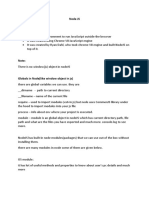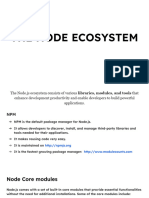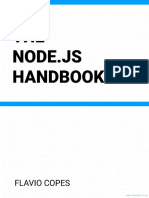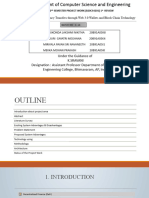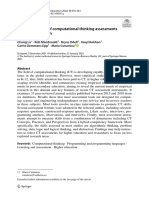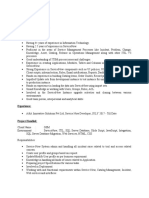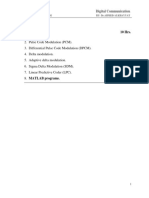0% found this document useful (0 votes)
139 views10 pagesNode JS
Node.js is a server-side JavaScript runtime environment that uses an event-driven, non-blocking I/O model. It allows JavaScript code to be run on the server. Node.js uses an event loop model that handles concurrent connections efficiently by executing callbacks asynchronously. Express is a popular web application framework for Node.js that supports routing and makes building web applications simpler. Node.js uses streams for efficient I/O operations and buffers for handling data in chunks to improve performance. Common modules include the file system (fs) module, http module, and third-party modules installed via NPM. Middleware functions can run before and after requests to modify them.
Uploaded by
Sana Fathima SanaCopyright
© © All Rights Reserved
We take content rights seriously. If you suspect this is your content, claim it here.
Available Formats
Download as PDF, TXT or read online on Scribd
0% found this document useful (0 votes)
139 views10 pagesNode JS
Node.js is a server-side JavaScript runtime environment that uses an event-driven, non-blocking I/O model. It allows JavaScript code to be run on the server. Node.js uses an event loop model that handles concurrent connections efficiently by executing callbacks asynchronously. Express is a popular web application framework for Node.js that supports routing and makes building web applications simpler. Node.js uses streams for efficient I/O operations and buffers for handling data in chunks to improve performance. Common modules include the file system (fs) module, http module, and third-party modules installed via NPM. Middleware functions can run before and after requests to modify them.
Uploaded by
Sana Fathima SanaCopyright
© © All Rights Reserved
We take content rights seriously. If you suspect this is your content, claim it here.
Available Formats
Download as PDF, TXT or read online on Scribd
/ 10


















